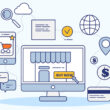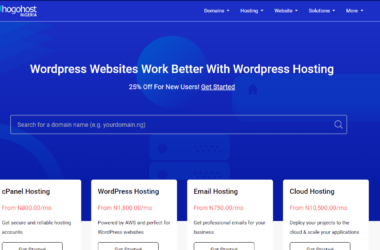The creator economy is booming, and digital products are one of the biggest drivers behind this growth. Digital products, like templates, courses, and ebooks have become a go-to solution for creators and entrepreneurs to monetize their knowledge and brand authority—and earn a steady passive income.
But with millions of digital products floating around the market, the competition is higher than ever. You need a standout product and a kick-ass marketing strategy to turn your efforts into dollars and maximize your profits.
So, what does a standout digital product look like, and how do you market one effectively? This article will answer all these questions and give you all the basics to launch and scale your digital product into a business.
Why choose digital products?
Digital products are non-physical items sold and used online—like a website template or an eBook. Selling digital products is a great way to earn passive income without stressing about inventory, order tracking, and delivery. You don’t have to worry about warehousing and shipping either.
Let’s look at four main reasons why you should sell digital products:
- Flexibility to save time: Once the product is ready, you can sell it from anywhere on your own schedule. It offers the flexibility to work on your clock. Plus, it becomes a passive source of income that you can grow at your convenience.
- No logistical hassle: Digital products don’t require inventory management, packaging, or shipping costs. You can quickly sell to an international audience without an extra shipping fee and maximize your profits through direct delivery online. Plus, you’ll virtually never run out of stock!
- More potential for growth: When compared to physical products, digital products offer better growth opportunities. They position you as an expert in your niche and unlock avenues to collaborate with bigger influencers to boost your authority.
- Lifestyle business: You can make a lifestyle business out of digital products and give your audience the best tips and hacks to lead a better life. Products like journals and work-life planners are great examples of this.
Today, digital products have become more valuable than physical products. These products don’t harm the environment, don’t take up any physical space, and don’t need constant management. So, it’s a win-win for you to start selling digital products.
7 popular digital products to earn profits
Now that you know why and how digital products can turn into a profitable side income, let’s look at the kind of digital products you can sell. Here are seven popular categories:
- Educational courses
Creating an online course usually requires a heavy time commitment, but it also promises a hefty return. These courses are widely used digital products by people to upskill or learn new skills. They are a combination of templates, videos, and printables.
For example, Kerry’s God Save the SERP is an online course for copywriters to learn SEO. She included interviews with experts, actionable advice, monthly accountability, co-working sessions, and a Slack community to share and give advice.
“Most people have an idea for a course, build it, and then try to find a market—wrong move. Your course idea should come from the market itself. I launched an SEO copywriting course for copywriters because copywriters kept asking me for advice, coaching, and digital products. And even then, I didn’t build out the whole course before I sold it. I pre-sold it, meaning I wrote the sales page, had an outline of what content we would cover, and took it to market. I sold out this beta launch, created the content, and dripped it out week by week. I had also already been paid, so I knew I wasn’t wasting my time.”
Kerry, founder of God Save the SERP Community
- Subscription content
Subscription-based content is when you sell a product in exchange for a small monthly fee. A site like Patreon allows artists and creators to monetize their business and sell their products to customers month-to-month.
Flow State, a paid newsletter, shares playlists to help subscribers boost their workday productivity through music. It’s a great example of paid subscription products.
- Software
Software is another popular digital product among both creators and users. The booming software-as-a-service (SaaS) industry has increased the trend of monthly or yearly subscriptions over one-time licenses.
Canva is an example of a digital software product. Using Canva, people can make book covers, images, and banners for professional and personal use. You can use the software completely free or take a subscription for $12.99/month.
- Ebooks
Ebooks are the digital versions of books you can download or read on any device. If you want to share your experience, tell a story, or communicate your expertise, ebooks offer an easy solution to give interested buyers access to your content.
Noelina Rissman’s ‘The Practical Content Writing Playbook’ is an excellent example of an ebook. In her book, she shares her knowledge, experience, and tips on becoming a content writer.
- Membership sites
Membership sites are websites with monthly services and subscriptions. They can easily integrate with other eCommerce businesses such as podcasts, email newsletters, or courses. Customers need to sign up on these membership sites to access exclusive content and other stuff the creator offers.
The Exit Five membership perfectly exemplifies this. The membership comes with access to Exit Five’s exclusive content, job board, and online events.
- Live video streaming
Live video streaming allows you to stream video in real-time without recording or editing it. Many vloggers use live video streaming to talk to their audience, host live Q/A sessions, play games, or organize an event.
You can use Youtube, Tiktok, or Twitch to do live video streaming for your audience. This is generally a paid stream to earn profits.
- Templates
Templates are downloadable documents that users can edit and customize according to their requirements. These can be related to design, writing, research, sales, or anything you specialize in.
The Freelance Template Playbook, for instance, contains templates for client communication. It includes message templates to write cold pitches, requests a pay increase, and handle different scenarios in your client relationship.
Similarly, Slidemodel sells a variety of PowerPoint templates to help you quickly prepare your presentations. They have several PowerPoint templates and presentation themes to cater to the different needs of your business.
6 steps to start your business with digital products
You’ve decided to launch your first digital product. You’re ready with a solid idea but can’t decide where to begin. While there isn’t a one-size-fits-all framework for creating and launching digital products, this 6-step process can set the proper groundwork for you.
Let’s look at the six key steps you should take to sell your digital products:
- Understand your target audience’s pain points
Before deciding what digital product you should create, it’s essential to take a pulse of your target audience—what kind of content they want to consume. So, the first step is to figure this out by talking to your potential customers.
Start by creating a buyer persona for your ideal customers. A buyer persona can put you deep into your customers’ shoes and strategize your product according to their needs. Interview these ideal buyers to understand:
- Their major pain points
- Their biggest goals and aspirations
- Typical challenges they face (think about how your product can solve those challenges)
- Existing solutions and what’s lacking in these solutions
- How much are they willing to spend to solve these challenges
The questions and answers will help you to identify the demand for your ideas and give you a better direction for the product.
For instance, if a yoga instructor decides to create a digital product about yoga, they have to first understand the concerns their audience faces and the effectiveness of the solutions already trying to solve these concerns. Then they can start thinking about a product of their own.
- Perform market analysis and analyze gaps
You’ve done the preliminary customer research and determined your product’s need. The next step is analyzing the existing gaps in the market to understand how you can market your offering.
You can start by studying the competitors in your niche—see what they’ve done, how engaged the audience is, how popular their product is, and where they are lagging. Try to ask their customers what they like about the product—or read their reviews to identify the best features—and dig deeper into the things customers want them to improve in the product.
Brainstorm the details of your digital product
Once you’re done with the market research, it’s time to start with the first draft. Creating the first draft also includes determining the price and resources required to complete the product.
To set the price, circle back to the first step and analyze potential buyers’ answers. Ideally, you should set the price based on the value your product can deliver. At this point, if you need extra help in designing the product and nailing down the details, you can hire a team to speed up the product creation process.
- Validate your idea
Validating your idea is the next crucial step in the framework. Once you’re ready with the minimum viable product (MVP)—a lightweight version of your final product, get some initial reviews from the audience through polls and surveys.
You can take help from relevant Facebook and LinkedIn groups to find potential customers and ask them for feedback. This is an integral part of the process since it allows you to get the audience’s opinion early and make necessary iterations without ruining too much of your work. So, it minimizes the back and forth you might have to face in the future.
- Develop and host it online
You’ve validated your idea and received amazing feedback from your would-be customers. It’s time to create the final version of your product and launch it online.
You need four things to sell the product:
- The product
- An engaged audience
- Payment methods
- A way to deliver the product
Choose any popular platforms to develop your product instead of doing all the heavy lifting yourself. Here’s a handy list of tools you can use to cover all bases:
- Stripe to accept payments
- Canva to create graphics
- WordPress to host your website
- Excel for creating spreadsheets and checklists
- Thinkific to develop online courses
- to sell any of your digital products
- Teachable to create and sell online courses
- MemberPress to create, manage, and track your membership subscriptions
Creating your product is just the first step. You have to think of the best ways to host and sell it. Platforms like Payhip and Podia let you set up a landing page or website to sell your products conveniently.
- Create a go-to-market strategy & promote it
Once your product is ready, and all the finer details are chalked out, strategize a go-to-market plan for the launch. Think of the best ways to create buzz around your product and generate leads—one of which is a landing page with a compelling copy to nudge visitors to buy.
Start by selecting your primary marketing channels. See where your audience hangs out the most and choose those places as your primary channels. Here are some ways you can market your product:
- Sharing relevant details about your product on social media
- Creating an email list to send regular updates and more info
- Prospecting on LinkedIn for cold outreach directed toward potential customers
- Starting a blog and using link building to increase domain authority
- Creating a referral marketing program
Analyze your resources to decide which methods would work best for you. Draw a clear roadmap for each technique and execute it consistently to drive positive results.
- Analyze, test, iterate
There’s no point in launching a product if your customers are:
- Not ready to buy the product
- Not receptive to your marketing methods
It’s best to test the waters before launching the product and reduce such risks. But even after you’ve launched the product, monitor audience response and track your sales continuously. Based on the sales you manage to make, reach out to your buyers and interested buyers to learn more about improvements you can make to the product.
Conclusion
Creating and selling a digital product is not as challenging as it may seem. When done right, it can become an excellent means to earn a passive income or launch a side hustle. Remember to do thorough market research and MVP testing before developing your product. Once it’s ready, ask for feedback and make necessary modifications before the launch.
Create a fail-proof got-to-market strategy for launching your product. After the launch, closely track your performance and talk to your audience to understand what you can do differently. It’s all about optimizing your product to meet their needs.










